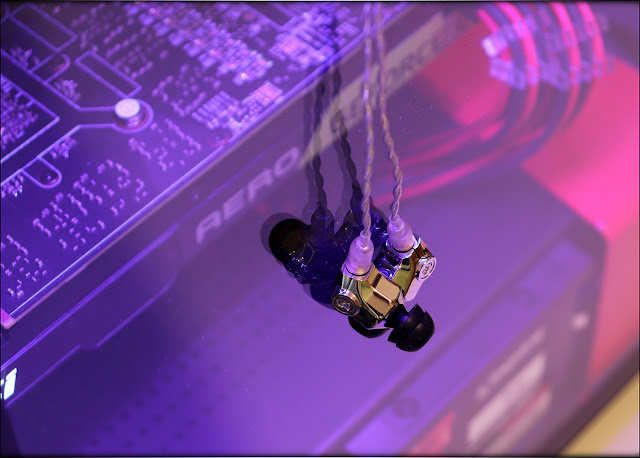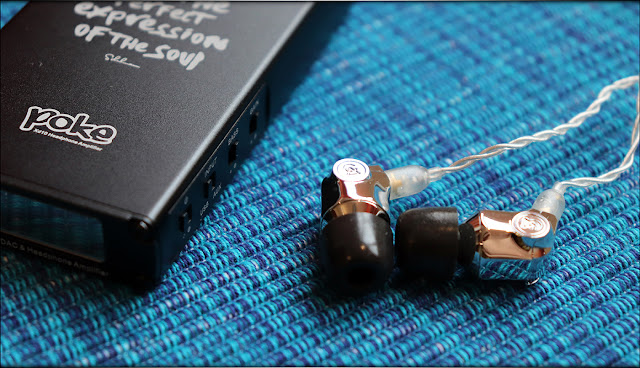Review: https://audiorambles.com/campfire-audio-atlas/
Introduction
Undoubtedly the undisputed
Magnum Opus of Campfire Audio, the Campfire Andromedas have received critical acclaim since their release. While they personally didn’t fit my bill, they remain a staple recommendation within the community. Perhaps a victim of the Andromeda’s widespread success, however, Campfire have found themselves under significant scrutiny after the disappointing debuts of the “Io” and “Polaris V2”.
Adding even more fuel to the metaphorical fire, their subsequent apparent failures to deal with community criticism on the Head-Fi forums, in particular, sparked even greater controversy.
Today, however, we take look at the Campfire Audio Atlas, their former flagship.
Before the introduction of the Solaris, the Atlas held its place in Campfire Audio’s lineup as the most expensive IEM,
priced at $1300 USD. Utilising a
single 10mm Amorphous Diamond-Like Carbon (A.D.L.C) diaphragm driver similar to the one used in the Campfire Vega, Campfire Audio sought to achieve “superior fidelity, excellent frequency response, and low distortion.”
Build Quality, Fit, Comfort and Isolation
Aesthetics (9.5/10): While extremely adept at being dedicated fingerprint/scratch magnets, there is an undeniable charm to the Atlas’s stunning good looks blessed by its cleanly machined shiny metal housings.
Build Quality (10/10): Come on, they’re machined solid housings made of metal. They look, feel and almost definitely are hardy. The MMCX connectors Campfire implements are also some of the best I’ve seen in the industry. To top it off, from personal experience with Campfire Audio, customer service has always been fantastic, and there were often a time where they’d send replacements for free even outside of the stipulated warranty period. Fantastic stuff.
Fit and Comfort (0/10): Bzzz. Bzzzzzzzz. Why hello there. It’s the fly in the ointment. The Atlas managed to stay in my ears grand total of 0 times in the time I owned them. The unfortunate combination of weight (they’re HEAVY) and size spelled their doom from the beginning. They were worn over-ear, straight-down, tried with myriad pairs of tips, but alas, nothing seemed to keep them in.
Oh, also, did I mention they had terrible driver flex? Shame.
Isolation (?/10): How man test for block sound when mini sound brick no stay in ear? Me no see how.
Sound
Bass (8.5/10): It’s big, big bass from the Atlas. Mostly midbass though, and the emphasis is glaringly obvious upon putting them into your ears. Midbass on the Atlas is gargantuan and they’re totally unapologetic about it, placing instruments like bass guitar, cellos, and basslines in general at the forefront of the mix. See
Dire Straits’
“Sultans of Swing”, or
Lauv’s “Paris in the Rain”, for example.
For its weight and power, it is surprisingly very tight, and very detailed, though not as detailed as say, the JH Audio Roxannes. Speed is very decent, also fairly remarkably agile for the sheer midbass attack.
In comparison, subbass on the Atlas might seem weak, but it certainly isn’t limp. They dive deep and hit hard, though not reaching the lowest registers like the CE-5 and Z1R can do so effortlessly. Keep in mind though, relative to most other sets, the Atlas can still be considered subbass heavy. While they do manage to provide rumble down low, it’s not particularly detailed nor clean, and can sound quite muddy at times.
The buttery and rich texture of the A.D.L.C driver also needs to be brought into attention, one of my favourite qualities of the Atlas’s bass. Guilty pleasure bass really, essentially.
Mids (8.25/10):The heavy midbass emphasis does make itself known in the midrange, which experiences some spill-over on tracks which are more enthusiastic in the low end. Naturally, it also warms up the lower midrange, darkening its tone as a result. The lower midrange, however, is quite recessed in the grand scheme of things, lacking the weight and body for singers like
Frank Sinatra to shine. Instruments like Electric Guitars also sounded a little blunt, lacking sufficient bite.
Upper Midrange, on the other hand, received a slight boost from Campfire Audio, giving female vocals and the midrange in general some space to breathe, injecting some much needed air and detail. There’s little to say in this regard other than the fact that the peaks were well implemented, allowing female vocals to retain their sweetness, also infusing a greater sense of perceived speed.
Midrange clarity resolution is great though, but detail retrieval can be a bit of an issue for an IEM with such an enormous price tag in comparison to the competition, as a result of the massive bass overpowering the minute bits of aural cues in the background. Midrange placement wise, they sit behind the bass and lower treble, a little further back in the overall sonic canvas.
5
Highs (8/10): To avoid a sound signature congested by the considerable bass response of the Atlas, Campfire have also understandably decided to also give the lower treble a little kick, achieving results similar to the bump in the upper midrange. More air, more detail, and an added bit of sparkle for a more exciting listen. Trumpets and cymbals on
Michael Buble’s “LOVE” sounded natural and clean, albeit just ever so slightly dulled in comparison to top tier sets.
The roll-off in upper treble cements the signature of the Atlas as a warm, v-shaped, and slightly dark IEM. The treble is clear and smooth till the drop-off, and lacking in the necessary extension required to fully enjoy tracks such a
s Elaine Page’s “Memory” from the Legendary “Cats” Musical. Though brighter signatures usually don’t sit well with me, I’d have like to have seen a greater quantity of treble in the uppermost registers.
Getting a good seal on the Atlas is paramount to making the treble sound competent, because it is a shrill and sharp mess otherwise. Yet, as previously discussed, fit is the #1 issue on the Atlas, so good luck with that.
Soundstage, Imaging, Seperation and Timbre (9/10): The Atlas’s width is above average, though it has magnificent depth. Headroom is quite neutered due to the lack of treble extension, causing a deficiency in soundstage height. Imaging is good, with instruments and backup singers occupying their own space across the soundscape, though precisely pin-pointing their location can be met with slight difficulty due to a slight hazy quality to the imaging. Separation is honestly poor for a kilobuck IEM, with elements from complicated tracks like
“Little Talks” occasionally blending into each other. Timbre is mostly quite good, perhaps my only complaint might be the blunt presentation on Trumpets, Violins and the like.
Conclusions
The Campfire Audio Atlas
certainly sounds great – but its signature is an acquired taste, one
for the most hardcore of bassheads, who still place a high priority upon clarity and air.
Additionally, the
sizeable price tag of the Atlas would also drive many away, given the presence of other sets with greater resolution and detail within similar price range.
The elephant in the room however, is of course, the
absolutely atrocious fit of the Atlas, the literal worst out of any and all IEMs I have ever tried. A combination of size, weight (not quite that of the Celestial Heavens, but still) and driver flex make it an absolute nightmare to wear. As a result, little roads lead to this particular Atlas,
and these are ultimately difficult to recommend.





















































